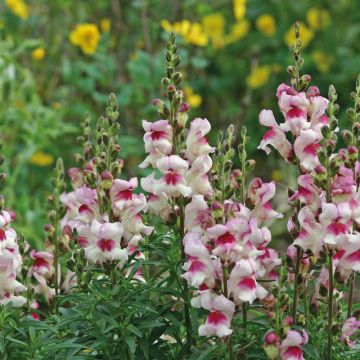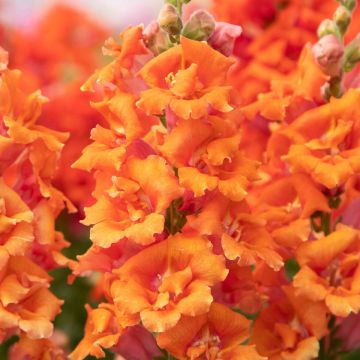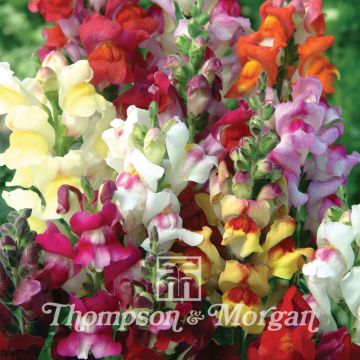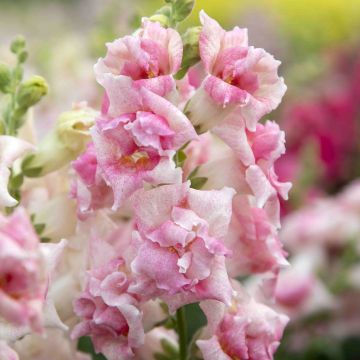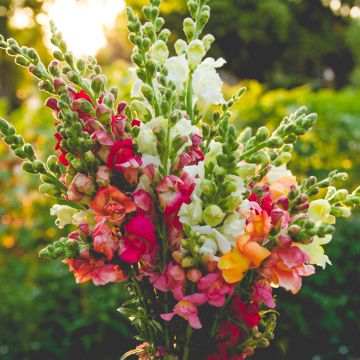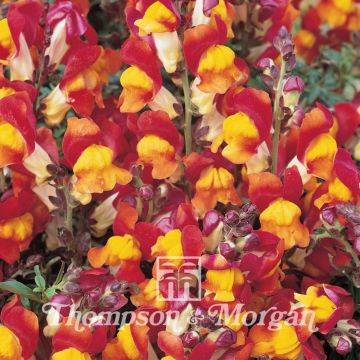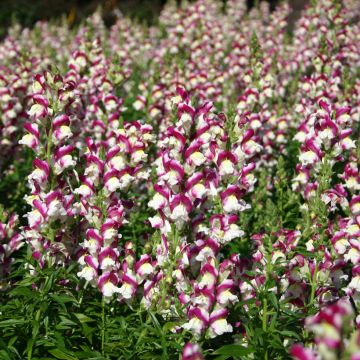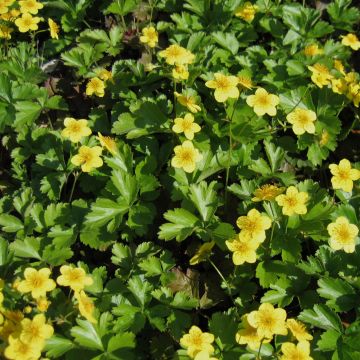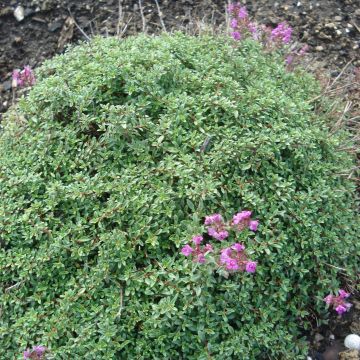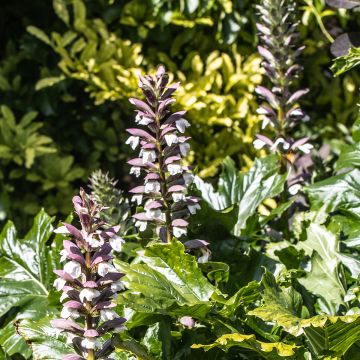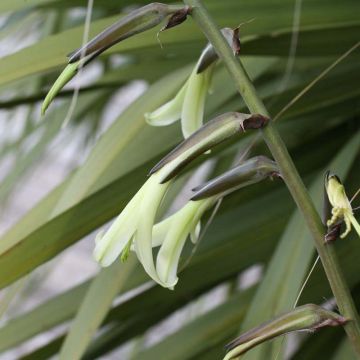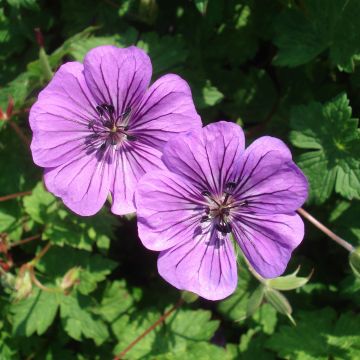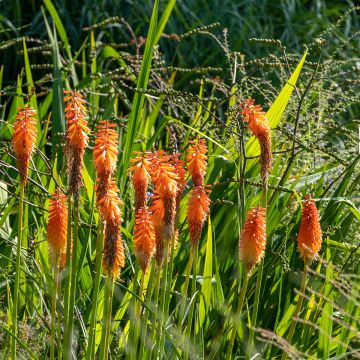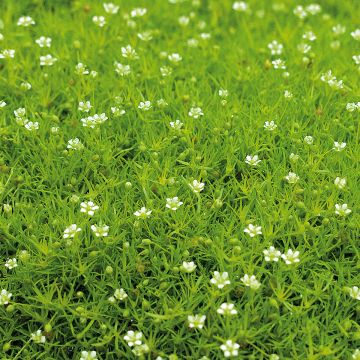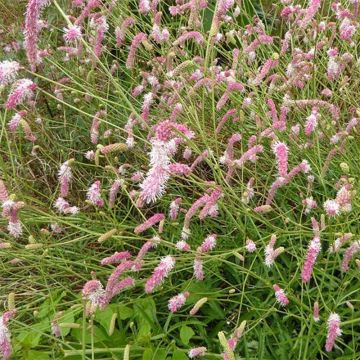

majus Antirrhinum Dazzling Lips Lemon


majus Antirrhinum Dazzling Lips Lemon
majus Antirrhinum Dazzling Lips Lemon
Antirrhinum majus Dazzling Lips® Lemon
Snapdragon, Dragon Flowers
Special offer!
Receive a €20 voucher for any order over €90 (excluding delivery costs, credit notes, and plastic-free options)!
1- Add your favorite plants to your cart.
2- Once you have reached €90, confirm your order (you can even choose the delivery date!).
3- As soon as your order is shipped, you will receive an email containing your voucher code, valid for 3 months (90 days).
Your voucher is unique and can only be used once, for any order with a minimum value of €20, excluding delivery costs.
Can be combined with other current offers, non-divisible and non-refundable.
Home or relay delivery (depending on size and destination)
Schedule delivery date,
and select date in basket
This plant carries a 6 months recovery warranty
More information
We guarantee the quality of our plants for a full growing cycle, and will replace at our expense any plant that fails to recover under normal climatic and planting conditions.
Would this plant suit my garden?
Set up your Plantfit profile →
Description
The Antirrhinum majus Dazzling Lips® Lemon is a snapdragon with large, highly fragrant yellow flowers. It is an early and particularly floriferous variety, with strong stems that excel in the garden, in pots, and in bouquets. In addition to its ornamental qualities, it is also a plant that attracts pollinators. Although not very hardy, it is generous and easy to grow as an annual.
Known in gardens since 1583, the Antirrhinum majus was a favored plant in monastery and clergy gardens. This plant, belonging to the plantain family, is native to the western Mediterranean basin, where it grows among rocks on the arid slopes of the Midi. In France, it can be found as far as Lozère and Aveyron. There are even plants rooted in the mortar of old walls protecting gardens. Contrary to popular belief, wild snapdragon species and certain varieties are perfectly perennial if provided with poor, sandy, rocky soil in full sun, sheltered from cold winds.
The 'Dazzling Lips Lemon' snapdragon is a recent selection and is part of a series of hybrids (the 'Dazzling Lips') chosen for their early and perpetual flowering, large and fragrant flowers, and sturdy flower spikes. It is more biennial than perennial and rarely lives for more than two years. In the year following planting, it forms a clump approximately 50-60 cm (20-24in) in height and 30-40 cm (12-16in) in width. Its upright, sturdy stems are covered with opposite or alternate, lanceolate, entire, glabrous leaves of a beautiful green hue. These leaves will persist on the plant if the winter is mild. The flowering occurs from May-June to September-October, in successive waves. 'Lemon' produces robust spikes bearing large tubular-based flowers with undulating lobes. The petals display a bright lemon yellow colour, speckled with warmer yellow towards the throat. They are highly visited by bumblebees and butterflies. Snapdragons readily self-seed in the garden, in light soil, but not always faithfully in relation to the parent plant.
Snapdragons are part of our childhood memories. With their small velvety snouts that emit a fragrance when one plunges their nose into the flowers, they are plants accessible to all gardeners, easy to install in borders, flower beds, or pots. Treat them as annuals in heavy soil, which is of little consequence considering their generosity. Larger varieties such as the 'Dazzling Lips' are perfect for cut flowers, flower pots, or cottage gardens. For example, associate them with love-in-a-mist, perennial flax, and valerians (Centranthus ruber). Their flower spikes are well highlighted when emerging among bushy perennials such as aster cordifolius or ground cover roses, cotton lavenders, 'Powis Castle' artemisias. Once the plant is established and to prolong its flowering, you can regularly remove faded flowers.
The snapdragon gets its vernacular name from the distinctive shape of its flowers, which, when pinched, resemble open mouths.
Note: Please note that our young plug plants are professional products intended for experienced gardeners: upon receipt, repot them as soon as possible, in pots, containers, or directly in flower beds.
Report an error about the product description
Flowering
Foliage
Plant habit
Botanical data
Antirrhinum
majus
Dazzling Lips® Lemon
Plantaginaceae (Scrophulariaceae)
Snapdragon, Dragon Flowers
Cultivar or hybrid
Other Antirrhinum - Snapdragon
View all →Planting and care
Snapdragons thrive in fertile, well-drained soils, even limestone-rich ones, that are well-prepared and in full sun. The tall snapdragon is not very hardy (-8/-10°C (17.6/14°F)), so it is often grown as an annual or biennial plant, especially in regions where winters are cold and wet. However, it is not uncommon to see snapdragons withstand several not too severe winters, but they then become more susceptible to rust. In order to try to preserve a beautiful variety, protect the plants from heavy frosts in winter by improving soil drainage (add gravel to your garden soil, slightly raise the planting area) and covering the stumps with a thick layer of leaves or dry herbs: they will come back in spring and bloom earlier.
Planting period
Intended location
Care
This item has not been reviewed yet - be the first to leave a review about it.
Similar products
Haven't found what you were looking for?
Hardiness is the lowest winter temperature a plant can endure without suffering serious damage or even dying. However, hardiness is affected by location (a sheltered area, such as a patio), protection (winter cover) and soil type (hardiness is improved by well-drained soil).

Photo Sharing Terms & Conditions
In order to encourage gardeners to interact and share their experiences, Promesse de fleurs offers various media enabling content to be uploaded onto its Site - in particular via the ‘Photo sharing’ module.
The User agrees to refrain from:
- Posting any content that is illegal, prejudicial, insulting, racist, inciteful to hatred, revisionist, contrary to public decency, that infringes on privacy or on the privacy rights of third parties, in particular the publicity rights of persons and goods, intellectual property rights, or the right to privacy.
- Submitting content on behalf of a third party;
- Impersonate the identity of a third party and/or publish any personal information about a third party;
In general, the User undertakes to refrain from any unethical behaviour.
All Content (in particular text, comments, files, images, photos, videos, creative works, etc.), which may be subject to property or intellectual property rights, image or other private rights, shall remain the property of the User, subject to the limited rights granted by the terms of the licence granted by Promesse de fleurs as stated below. Users are at liberty to publish or not to publish such Content on the Site, notably via the ‘Photo Sharing’ facility, and accept that this Content shall be made public and freely accessible, notably on the Internet.
Users further acknowledge, undertake to have ,and guarantee that they hold all necessary rights and permissions to publish such material on the Site, in particular with regard to the legislation in force pertaining to any privacy, property, intellectual property, image, or contractual rights, or rights of any other nature. By publishing such Content on the Site, Users acknowledge accepting full liability as publishers of the Content within the meaning of the law, and grant Promesse de fleurs, free of charge, an inclusive, worldwide licence for the said Content for the entire duration of its publication, including all reproduction, representation, up/downloading, displaying, performing, transmission, and storage rights.
Users also grant permission for their name to be linked to the Content and accept that this link may not always be made available.
By engaging in posting material, Users consent to their Content becoming automatically accessible on the Internet, in particular on other sites and/or blogs and/or web pages of the Promesse de fleurs site, including in particular social pages and the Promesse de fleurs catalogue.
Users may secure the removal of entrusted content free of charge by issuing a simple request via our contact form.
The flowering period indicated on our website applies to countries and regions located in USDA zone 8 (France, the United Kingdom, Ireland, the Netherlands, etc.)
It will vary according to where you live:
- In zones 9 to 10 (Italy, Spain, Greece, etc.), flowering will occur about 2 to 4 weeks earlier.
- In zones 6 to 7 (Germany, Poland, Slovenia, and lower mountainous regions), flowering will be delayed by 2 to 3 weeks.
- In zone 5 (Central Europe, Scandinavia), blooming will be delayed by 3 to 5 weeks.
In temperate climates, pruning of spring-flowering shrubs (forsythia, spireas, etc.) should be done just after flowering.
Pruning of summer-flowering shrubs (Indian Lilac, Perovskia, etc.) can be done in winter or spring.
In cold regions as well as with frost-sensitive plants, avoid pruning too early when severe frosts may still occur.
The planting period indicated on our website applies to countries and regions located in USDA zone 8 (France, United Kingdom, Ireland, Netherlands).
It will vary according to where you live:
- In Mediterranean zones (Marseille, Madrid, Milan, etc.), autumn and winter are the best planting periods.
- In continental zones (Strasbourg, Munich, Vienna, etc.), delay planting by 2 to 3 weeks in spring and bring it forward by 2 to 4 weeks in autumn.
- In mountainous regions (the Alps, Pyrenees, Carpathians, etc.), it is best to plant in late spring (May-June) or late summer (August-September).
The harvesting period indicated on our website applies to countries and regions in USDA zone 8 (France, England, Ireland, the Netherlands).
In colder areas (Scandinavia, Poland, Austria...) fruit and vegetable harvests are likely to be delayed by 3-4 weeks.
In warmer areas (Italy, Spain, Greece, etc.), harvesting will probably take place earlier, depending on weather conditions.
The sowing periods indicated on our website apply to countries and regions within USDA Zone 8 (France, UK, Ireland, Netherlands).
In colder areas (Scandinavia, Poland, Austria...), delay any outdoor sowing by 3-4 weeks, or sow under glass.
In warmer climes (Italy, Spain, Greece, etc.), bring outdoor sowing forward by a few weeks.






























